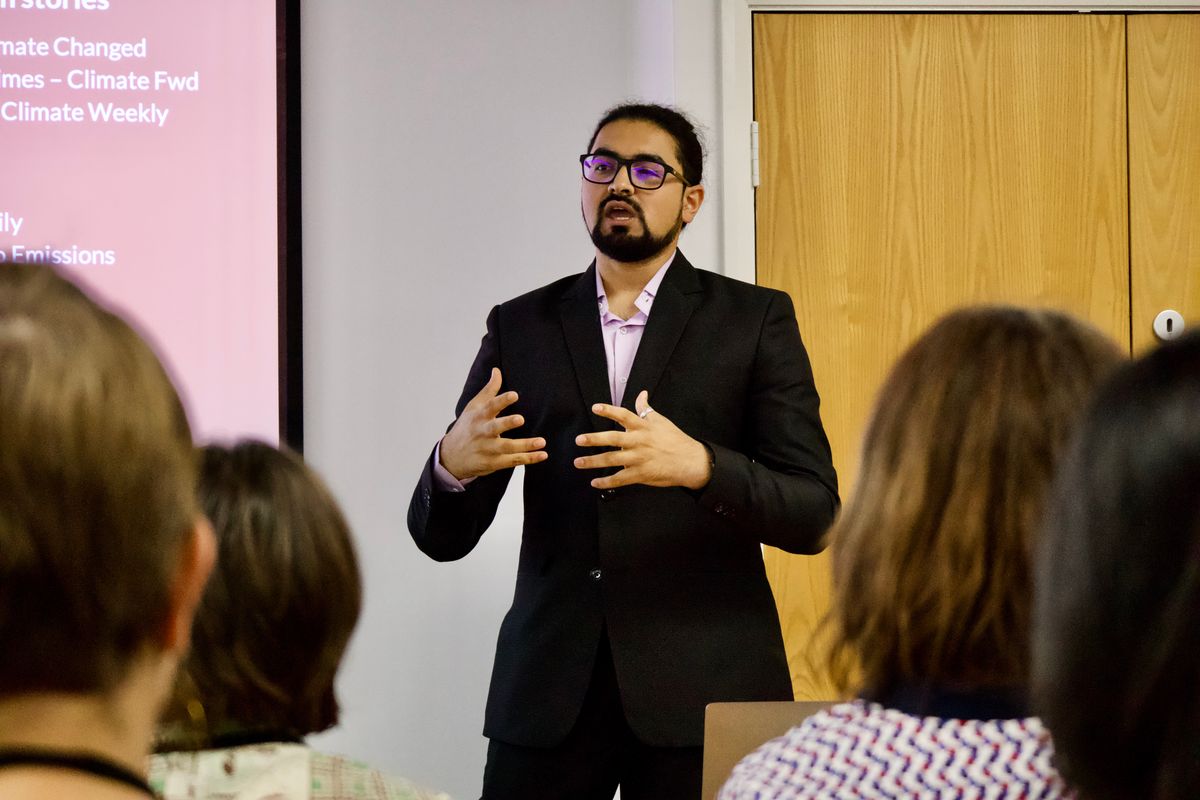Newsletters: how to connect communities
Newsletters are an intensely personal medium. Here’s how to do them right - and use them to make an impact.

Akshat Rathi is a senior reporter for Quartz, where he covers science, energy, and environment. He writes a weekly newsletter: The Race to Zero Emissions. He spoke to the News Impact Summit in Brimingham about newsletters as a community tool.
Warning: liveblogging. Prone to error, inaccuracy and howling crimes against grammar and syntax. Post will be corrected and updated in the coming days.
What is a newsletter? It is the dark secret of the online world that newsletter drive a lot of interaction, engagement and traffic. They have become a really, really powerful medium - especially for media organizations. It's an intimate way of keeping in touch with people, who are granting you the right to come into the inbox.
It's a one-to-many communication, that can allow one-to-one response.
And, of course, it's a way of building an audience - and a very specific audience.
You can categorise them as coming from publications and from individuals. They have very different flavours.
Let's start with:
Purpose

You can:
- Highlight your own stories - drive traffic to your journalism
- Curate news - a place where people can get a sense of news daily/weekly/etc
- Share your point of view - people with strong points of view that they want to share
So:
- Find a purpose
- Know your audience
- Be bold
Structure
A regular structure allows readers to navigate the newsletter easily, and grow computable with it. Key elements:
Top Slot
A space for a big story, a personal introduction or even a short essay.
Regular Feature
Where do you adverts live? What regular slots do you have in the email?
Use of images
You can use memes, storytelling images - or lead images.
Example: CarbonBrief
The idea of the CarbonBrief is to give readers the ability to go into a meeting and blag that they’ve persuaded the whole of the world’s media for the latest climate change information. The uses a mix of RSS feeds, Factiva, Google Alerts and Twitter to find things.
They give prominence to the biggest story, so people know what the key issue of the day is. They don’t have sponsorship and ads - that create an impression of editorial purity that is important.
They split news and comment. Their readers value that clarity. Today, for example, there’s a lot of very anti-Extinction Rebellion pieces. The Telegraph has done consecutive editorials on it.
They also read RSS feeds of the key peer-reviewed journals to keep track of all the latest research.
Their structure
- New on Carbon Brief
a. Featured List
b. Image - Climate and energy news
a. Top news form around the world
b. Smart curation - Climate and energy comment
a. Opinion
b. Big features - New Climate Stories
- Other Stories
a. Long list
b. Headlines and publication name
Building a newsletter
- Come up with your idea
- Create a structure - pick a top slot and regular features
- Prototype and seek feedback on the newsletter
- Revise your prototype based on that
- Launch!
One of the delights of newsletter-writing is the ability to meet subscribers. Whenever he’s travelling, he puts out a call on the newsletter for local subscribers to meet in a pub. Newsletters travel - people forward them, and the community grows through that.





